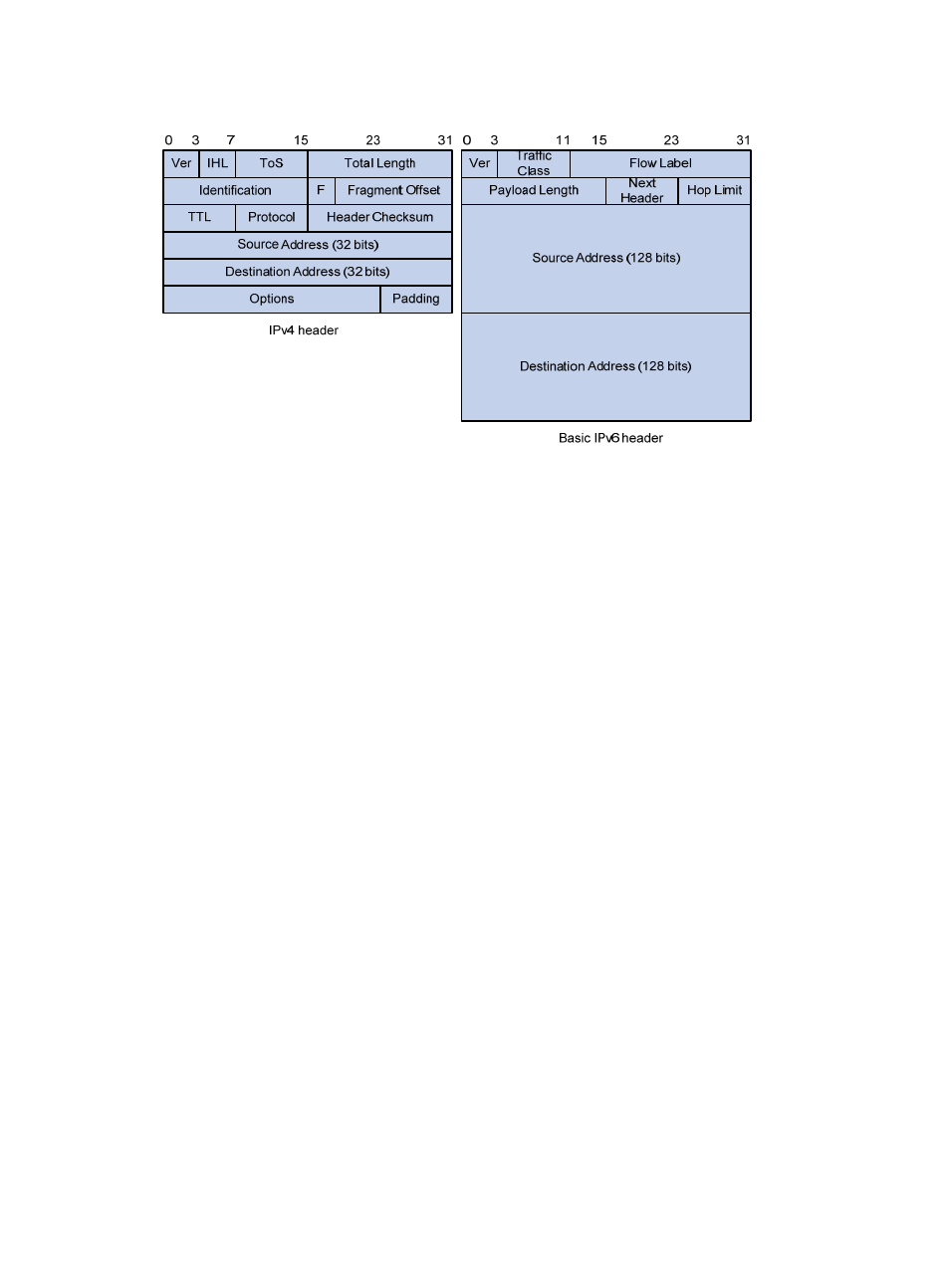Larger address space, Hierarchical address structure, Address autoconfiguration – H3C Technologies H3C SecPath F1000-E User Manual
Page 102: Built-in security, Qos support, Enhanced neighbor discovery mechanism

2
Figure 1 IPv4 packet header format and basic IPv6 packet header format
Larger address space
The source and destination IPv6 addresses are 128 bits (or 16 bytes) long. IPv6 can provide 3.4 x 10
38
addresses to meet the requirements of hierarchical address division and the allocation of public and
private addresses.
Hierarchical address structure
IPv6 adopts the hierarchical address structure to quicken route searches and reduce the system sources
occupied by the IPv6 routing table by route aggregation.
Address autoconfiguration
To simplify host configuration, IPv6 supports stateful and stateless address autoconfiguration.
•
Stateful address autoconfiguration enables a host to acquire an IPv6 address and other
configuration information from a server (for example, a DHCP server).
•
Stateless address autoconfiguration enables a host to generate automatically an IPv6 address and
other configuration information by using its link-layer address and the prefix information advertised
by a router.
To communicate with other hosts on the same link, a host automatically generates a link-local address
based on its link-layer address and the link-local address prefix (FE80::/10).
Built-in security
IPv6 defines extension headers to support IPsec. IPsec provides end-to-end security for network security
solutions and enhances interoperability among different IPv6 applications.
QoS support
The Flow Label field in the IPv6 header allows the device to label the packets and facilitates the special
handling of a flow.
Enhanced neighbor discovery mechanism
The IPv6 neighbor discovery protocol is implemented through a group of Internet Control Message
Protocol version 6 (ICMPv6) messages to manage the information exchange among neighboring nodes
on the same link. The group of ICMPv6 messages replaces Address Resolution Protocol (ARP) messages,
